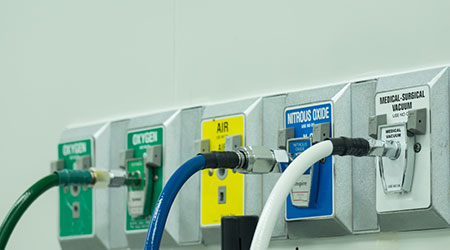Q: The accreditation standard states that we must test, inspect and maintain critical components of piped medical gas systems. The standard does not have a prescribed frequency, but it does say that we should conduct a risk assessment if the frequency is less than annual. Do you have a sample risk assessment to use for this evaluation? What should be evaluated? Reliability of system components?
A: Let’s clarify a few things… First of all, it appears you’re looking at an old set of accreditation standards. The current edition of the accreditation manual for hospitals identifies the standard as requiring the medical gas system components to be tested, inspected, and maintained in time frames as defined by the hospital. It references NFPA 99-2012, section 5.1.14.2 which does say scheduled inspections shall be established through the risk assessment of the facility.
There is a simple risk assessment form you can down-load from my website under “Tools”, but be aware that you may use any format you wish, including a narrative format (my favorite).
In this scenario, you are evaluating whether or not the medical gas system components may have a less-frequent test/inspection than once-per-year (which is recommended by NFPA 99-2012, A.5.1.15). You would base this assessment on the history of the equipment, and the risk of failure to the patient. If you test and inspect the equipment each year for many years and there are no failures, then that would imply you could perform the test/inspection less frequently.
However, if you have a Category 1 system, that implies a high risk to the patient and any failure could not be tolerated. I would surmise that all Category 1 medical gas systems would have to have annual test/inspection activities.
Brad Keyes, CHSP, is the owner of KEYES Life Safety Compliance, and his expertise is in the management of the Life Safety Program, including the Environment of Care and Emergency Management programs.

 How Efficiency Checklists Help Hospitals Save Energy, Water and Money
How Efficiency Checklists Help Hospitals Save Energy, Water and Money Designing with Heart: Seen Health Center Blends Cultural Warmth and Clinical Care
Designing with Heart: Seen Health Center Blends Cultural Warmth and Clinical Care Rutgers Health and University Hospital Breaks Ground on Campus Expansion
Rutgers Health and University Hospital Breaks Ground on Campus Expansion What to Consider When Modernizing Healthcare Facilities
What to Consider When Modernizing Healthcare Facilities Corewell Health Beaumont Troy Hospital to Build New Tower
Corewell Health Beaumont Troy Hospital to Build New Tower